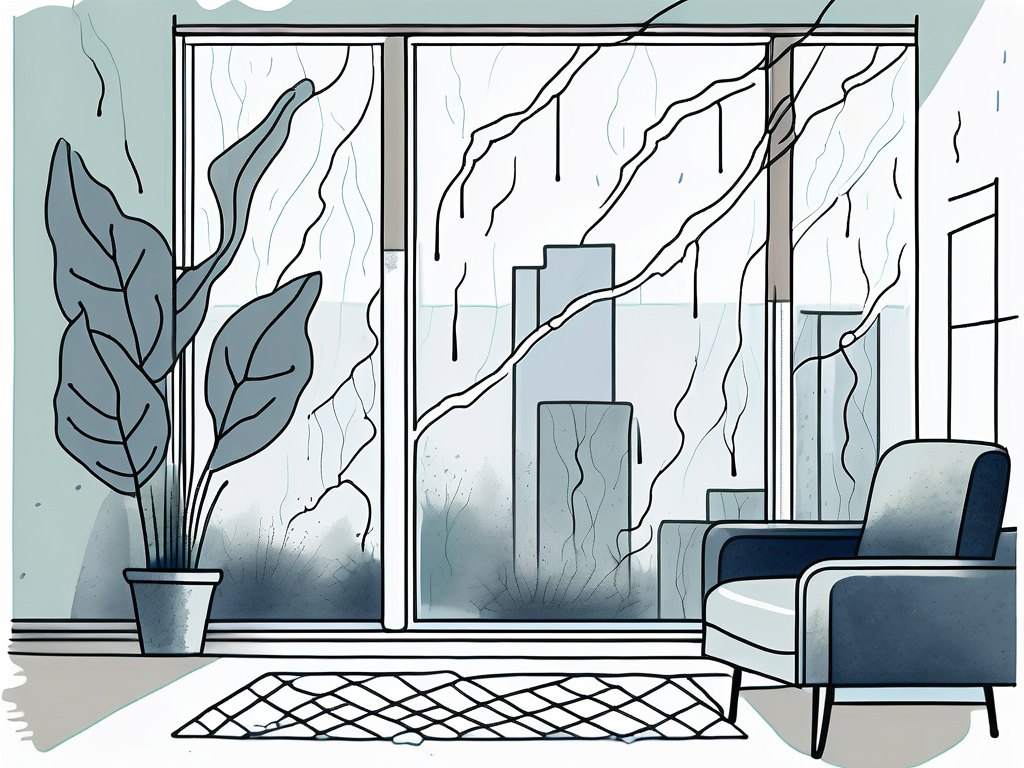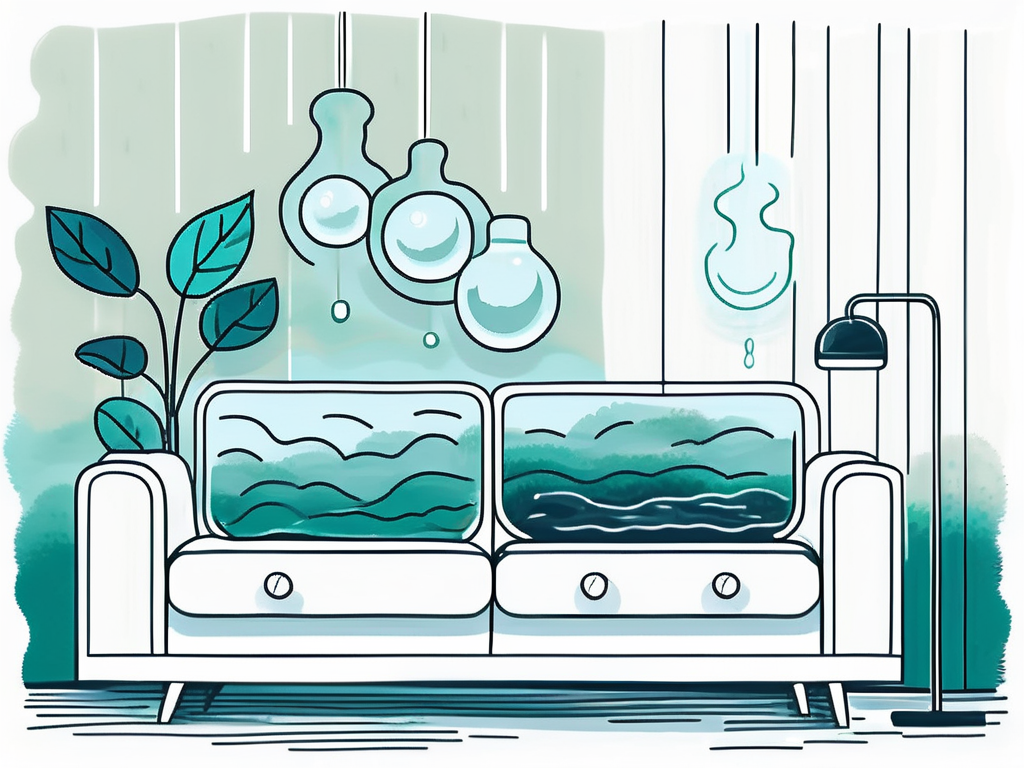Relative humidity is a fundamental concept in understanding the dynamics of humidity control. It is a term that is frequently used in meteorology, HVAC systems, and indoor air quality discussions. This glossary entry aims to provide a comprehensive understanding of relative humidity and its importance in humidity control.
The term ‘relative humidity’ refers to the amount of moisture present in the air compared to the maximum amount the air could hold at the same temperature. It is expressed as a percentage, and it plays a significant role in determining our comfort levels and the efficiency of various systems and processes.
Understanding Relative Humidity
To fully grasp the concept of relative humidity, it’s essential to understand the relationship between temperature and moisture in the air. Warm air can hold more moisture than cold air. Therefore, as the temperature increases, so does the capacity of the air to hold moisture.

When we say that the relative humidity is 50%, it means that the air is holding half of the moisture it could hold at that temperature. If the temperature drops without any change in the amount of moisture in the air, the relative humidity will increase because the air’s capacity to hold moisture has decreased.
The Role of Temperature
Temperature plays a crucial role in determining relative humidity. As mentioned earlier, warm air can hold more moisture than cold air. This is why relative humidity is often high in the mornings when the temperature is low, and lower in the afternoons when the temperature is high, assuming no change in the amount of moisture in the air.
It’s also worth noting that when the air can’t hold any more moisture, it is said to be saturated, and the relative humidity is 100%. This often happens when the temperature drops significantly, leading to phenomena like dew, frost, or fog.
Measurement of Relative Humidity
Relative humidity is typically measured using a device called a hygrometer. There are various types of hygrometers, including mechanical, electronic, and dew point hygrometers. These devices work on different principles to measure the amount of moisture in the air.
Mechanical hygrometers use organic materials like hair or a piece of paper, which expand or contract with changes in humidity. Electronic hygrometers use sensors that change their electrical resistance or capacitance with changes in humidity. Dew point hygrometers cool a surface until condensation forms on it, and the temperature at which this happens is used to determine the relative humidity.
Importance of Relative Humidity in Humidity Control
Understanding and controlling relative humidity is crucial for various reasons. For one, it significantly affects human comfort. High relative humidity can make the air feel warmer than it actually is, leading to discomfort and health issues like heat exhaustion or heat stroke.
On the other hand, low relative humidity can cause dry skin, irritate the eyes and throat, and exacerbate respiratory conditions. It can also cause wooden furniture to shrink and crack, and paper and textiles to become brittle. Therefore, maintaining an optimal level of relative humidity is essential for both health and comfort.
Relative Humidity in HVAC Systems
In Heating, Ventilation, and Air Conditioning (HVAC) systems, controlling relative humidity is crucial for maintaining indoor air quality and energy efficiency. High relative humidity can lead to the growth of mold, mildew, and other allergens, which can adversely affect indoor air quality.
Moreover, if the relative humidity is too high, the HVAC system will have to work harder to cool the air, leading to higher energy consumption. On the other hand, if the relative humidity is too low, it can cause discomfort and health issues, as mentioned earlier.
Relative Humidity in Industrial Processes
Relative humidity also plays a vital role in various industrial processes. For instance, in the food and pharmaceutical industries, controlling relative humidity is crucial for preventing spoilage and ensuring product quality. High relative humidity can lead to the growth of bacteria and fungi, while low relative humidity can cause products to dry out and lose their effectiveness.
In the textile industry, relative humidity affects the strength and elasticity of fibers. In the printing industry, it affects the drying time of inks and the dimensional stability of paper. Therefore, maintaining an optimal level of relative humidity is essential for the efficiency and quality of these processes.
Controlling Relative Humidity
There are various methods to control relative humidity, depending on the specific needs and circumstances. These methods can be broadly categorized into two types: increasing and decreasing relative humidity.

To increase relative humidity, one can use humidifiers, which add moisture to the air, or decrease the temperature without changing the amount of moisture in the air. To decrease relative humidity, one can use dehumidifiers, which remove moisture from the air, or increase the temperature without changing the amount of moisture in the air.
Humidifiers and Dehumidifiers
Humidifiers work by releasing water vapor or steam into the air to increase the amount of moisture. There are various types of humidifiers, including evaporative, ultrasonic, and steam vaporizer humidifiers. These devices work on different principles to add moisture to the air.
Dehumidifiers, on the other hand, work by removing moisture from the air. They do this by drawing in air, cooling it to condense the moisture, and then reheating the air and releasing it back into the room. Like humidifiers, there are various types of dehumidifiers, including refrigerant, desiccant, and whole-house dehumidifiers.
Temperature Control
As mentioned earlier, temperature plays a crucial role in determining relative humidity. Therefore, controlling the temperature can be an effective way to control relative humidity. This can be done using HVAC systems, heaters, or coolers, depending on whether the goal is to increase or decrease the relative humidity.
However, it’s worth noting that while temperature control can be effective, it’s not always the most energy-efficient method. This is because changing the temperature requires a significant amount of energy, especially in large spaces. Therefore, it’s often more efficient to use humidifiers or dehumidifiers to control relative humidity.
Conclusion
In conclusion, relative humidity is a crucial concept in understanding and controlling humidity. It affects our comfort, health, the efficiency of various systems and processes, and the quality of various products. Therefore, understanding and controlling relative humidity is of utmost importance.

Whether you’re trying to maintain a comfortable environment, ensure the efficiency of your HVAC system, or ensure the quality of your products, understanding and controlling relative humidity can make a significant difference. We hope this glossary entry has provided you with a comprehensive understanding of relative humidity and its importance in humidity control.




